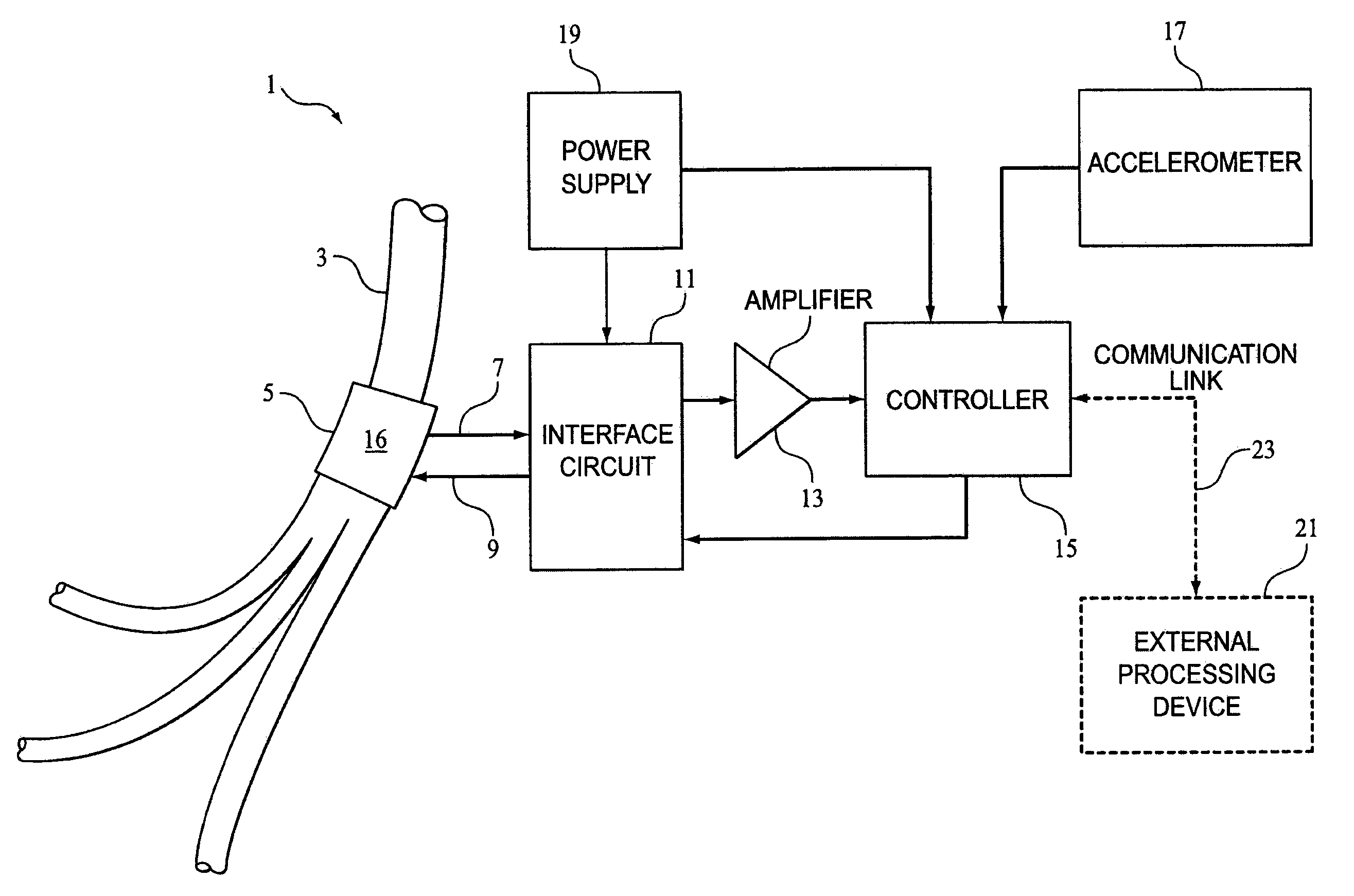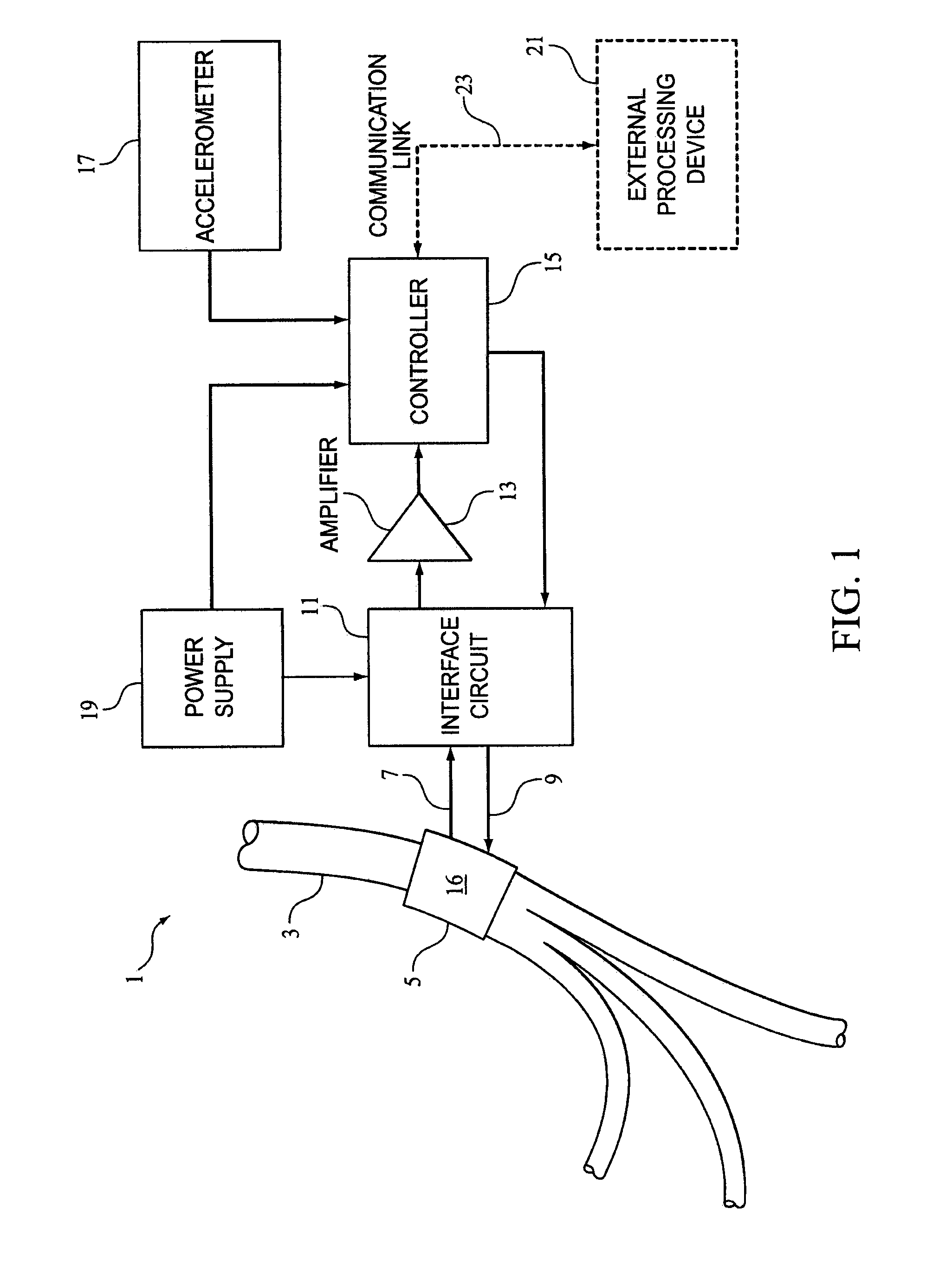Method and apparatus for hypoglossal nerve stimulation
a technology of hypoglossal nerve and stimulation method, which is applied in the direction of head electrodes, internal electrodes, therapy, etc., can solve the problems of not preventing occlusion, stimulating the hypoglossal nerve, and affecting the patient's sleep, so as to prevent occlusion of the patient's upper airway
- Summary
- Abstract
- Description
- Claims
- Application Information
AI Technical Summary
Benefits of technology
Problems solved by technology
Method used
Image
Examples
Embodiment Construction
[0024]For purposes of the description hereinafter, spatial orientation terms, if used, shall relate to the referenced embodiment as it is oriented in the accompanying drawing figures or otherwise described in the following detailed description. However, it is to be understood that the embodiments described hereinafter may assume many alternative variations and embodiments. It is also to be understood that the specific devices illustrated in the accompanying drawing figures and described herein are simply exemplary and should not be considered as limiting.
[0025]The present invention is directed to a system and method for the treatment of sleep disordered breathing through stimulation of the hypoglossal nerve of a human patient. The system and method overcome various shortcomings of prior art systems by monitoring the hypoglossal nerve and stimulating the hypoglossal nerve in response to a pre-inspiratory drive signal before any occlusion of the upper airway of the patient has occurre...
PUM
 Login to View More
Login to View More Abstract
Description
Claims
Application Information
 Login to View More
Login to View More - R&D
- Intellectual Property
- Life Sciences
- Materials
- Tech Scout
- Unparalleled Data Quality
- Higher Quality Content
- 60% Fewer Hallucinations
Browse by: Latest US Patents, China's latest patents, Technical Efficacy Thesaurus, Application Domain, Technology Topic, Popular Technical Reports.
© 2025 PatSnap. All rights reserved.Legal|Privacy policy|Modern Slavery Act Transparency Statement|Sitemap|About US| Contact US: help@patsnap.com



